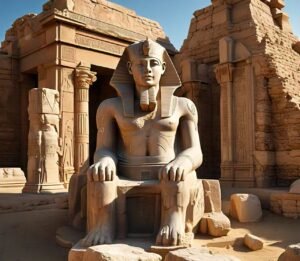Ancient Artz: The Timeless Legacy Artistic Expressions

Ancient Artz
Ancient art has fascinated generations with its aesthetic brilliance, historical significance, and enigmatic mysteries. The concept of Ancient Artz refers to these ancient forms of artistic expression spanning civilizations, from the early cave paintings of prehistoric man to the sophisticated sculptures and monuments of ancient Greece, Egypt, and Mesopotamia. With its influence evident in nearly every corner of modern art, Ancient Artz is a fundamental testament to human creativity, spirituality, and the need to document and interpret the world. This article delves into these timeless pieces’ origins, techniques, and lasting impact.
The Origins of Ancient Artz
The story of Ancient Artz begins with the earliest known human societies. People in the Paleolithic era produced basic representations of animals, landscapes, and daily life on cave walls. Not merely decorative, these pieces often held spiritual or ritualistic importance, illustrating humanity’s first known attempts to communicate through images.
You May Also Like: 213 Area Code: Top 10 Facts That Will Amaze You
The oldest examples of Ancient Artz have been discovered in locations across Africa, Europe, and Asia, notably in places such as France’s Chauvet Cave and Spain’s Altamira Cave. As civilization advanced, so did art, evolving in complexity and purpose. These initial steps of artistic expression laid the foundation for what we now consider classic masterpieces, each offering unique insights into the people and beliefs of the time.
Cultural Influence and Diversity in Ancient Artz
As societies grew and cultures began interacting through trade, conflict, and migration, ancient art expanded in technique and symbolism. For instance, Egyptian art is renowned for its grandeur and detailed representation of the gods, while Mesopotamian art is characterized by its cylindrical seals and monumental ziggurats. These differences reveal much about the values and priorities of each civilization.
Similarly, Ancient Artz in Asia developed under a blend of religious and philosophical influences, with Buddhist, Hindu, and Taoist iconography prominently featured in sculptures, paintings, and architectural designs. Each of these forms helped immortalize the spiritual and philosophical beliefs of the time, allowing future generations to connect with the ancient world’s mindset and values.
Ancient Artz Techniques: Craftsmanship and Innovation

What makes Ancient Artz truly mesmerizing is the sheer skill and ingenuity required to create art without modern tools. Techniques varied widely across regions and periods, from the engraving and carving methods of prehistoric artisans to the use of bronze, gold, and other metals in Egyptian and Greek creations.
- Stone Carving and Engravings: Often used for religious and commemorative purposes, stone carvings stand as some of the most enduring examples of ancient art. Massive stone monuments like the pyramids of Egypt and the statues of Easter Island demonstrate both technical prowess and cultural devotion.
- Metalwork and Bronze Casting: Bronze casting was particularly popular in China and ancient Greece, giving rise to detailed statues and ceremonial objects that have withstood the test of time.
- Mural Painting and Frescoes: Frescoes were a primary medium in Minoan, Egyptian, and Roman societies, where artists used natural pigments to create vivid depictions of myths, daily life, and religious practices.
These methods required incredible patience, skill, and innovation, especially considering the limitations of ancient tools and materials. Each piece created was not just an object but a testament to the commitment and belief systems of the people who produced it.
The Role of Symbolism in Ancient Artz
Symbols played a crucial role in Ancient Artz, especially where literacy was not widespread. Icons, gods, and mythical figures were depicted in a manner that would communicate ideas to the common people without the need for written language. Egyptian hieroglyphs, for example, combined art and writing, enabling messages of power, divinity, and cultural practices to transcend generations.
The Greeks, meanwhile, used symbolic realism in their sculptures and pottery, showing gods and heroes in forms that reflected human anatomy with precision. These symbols and representations allowed myths and beliefs to endure, illustrating society’s ideals and aspirations.
Major Civilizations and Their Contributions to Ancient Artz
Throughout history, several civilizations have contributed vastly to Ancient Artz. Each brought unique styles, techniques, and perspectives, enriching the broader tapestry of ancient art.
Egyptian Art
Egyptian art is arguably among the most recognizable due to its distinct style and emphasis on afterlife themes. Pharaohs, deities, and symbolic animals were often rendered with strict guidelines, prioritizing divine order over realism. The construction of monumental structures like the Pyramids and the Great Sphinx reflects Egypt’s dedication to eternal life, power, and stability.
Greek Art
Greek art set the standards for realism and idealism, particularly in sculpture. Famed for their attention to anatomical details, Greek sculptors like Phidias created lifelike depictions of gods, heroes, and athletes, marking a significant departure from the stylistic rigidity of Egyptian art. Greek pottery also depicted scenes from mythology and daily life, further immortalizing the Hellenistic world.
Mesopotamian Art
Mesopotamia, often considered the “Cradle of Civilization,” gave birth to the first written language, cuneiform. Art from this region includes intricate cylinder seals, temple statues, and imposing ziggurats. Mesopotamian art reflects its peoples’ deep religious devotion, with representations of gods and goddesses dominating much of the work.
Asian Contributions
In Asia, Ancient Artz has deep spiritual roots. Indian, Chinese, and Japanese ancient art incorporated spiritual philosophies, with many pieces focusing on enlightenment and the natural world. Intricate Buddhist sculptures, ancient Chinese calligraphy, and Japanese woodblock prints are timeless examples of how ancient Asian art embodied cultural philosophies and ideals.
Preservation of Ancient Artz: Challenges and Triumphs
Preserving Ancient Artz presents significant challenges due to environmental conditions, human interference, and the sheer age of many artifacts. Over the centuries, wars, natural disasters, and neglect have taken a toll on ancient art, leading to the loss of numerous irreplaceable works. However, ongoing preservation efforts, from advanced restoration techniques to digital archiving, are helping to protect what remains.
Museums and organizations worldwide, like the British Museum and UNESCO, are committed to conserving these treasures. By restoring and preserving ancient artifacts, they provide future generations with an opportunity to connect with the origins of human creativity and cultural expression.
Ancient Artz in Modern Culture
The impact of Ancient Artz continues to be felt today, inspiring modern artists, architects, and designers. Many artistic movements, such as the Renaissance, Neoclassicism, and even modern minimalism, drew heavily from ancient techniques and symbolism.
For instance, the influence of Greco-Roman art on Western architecture is evident in governmental buildings and cultural landmarks worldwide. Similarly, contemporary artists and filmmakers often draw on ancient mythology, legends, and aesthetics, reaffirming that the themes and emotions embodied in Ancient Artz remain universally relevant.
Learning from Ancient Artz Today
Today, Ancient Artz offers valuable lessons in resilience, creativity, and cultural identity. By studying ancient works, we gain insights into the challenges and triumphs of past societies, enriching our understanding of humanity’s shared journey. These ancient pieces remind us that, despite technological advancements, the human need to create, express, and reflect remains unchanged.
Ancient art is much more than artifacts; it is a bridge to our ancestors, a reflection of our deepest instincts, and a constant source of inspiration. Whether through detailed sculptures or symbolic frescoes, Ancient Artz remains a timeless language that speaks across ages, reminding us of the eternal beauty and complexity of human expression.







